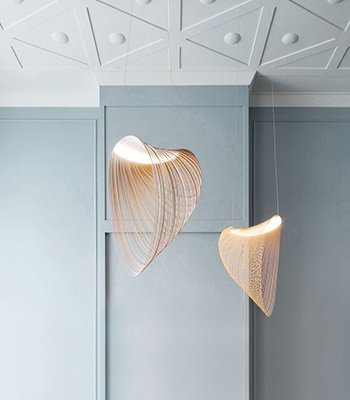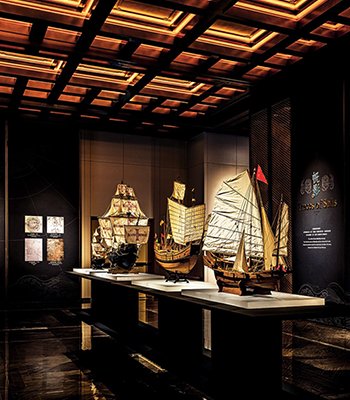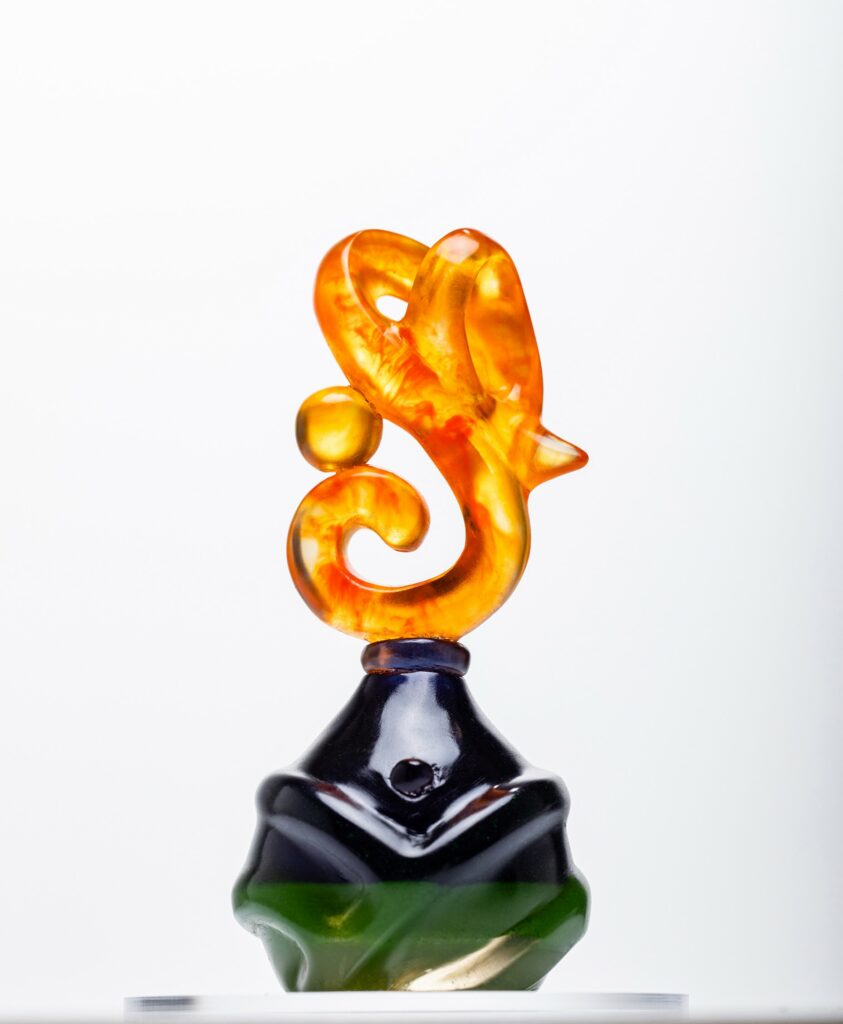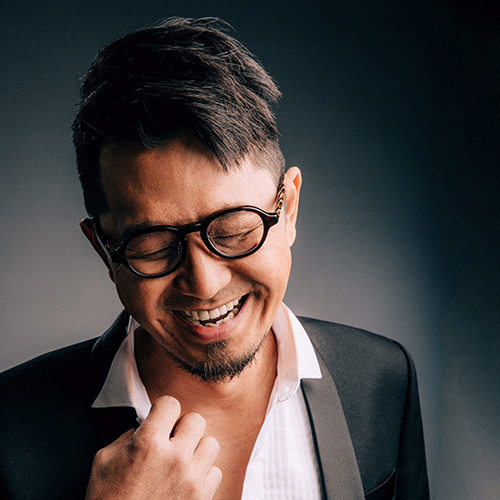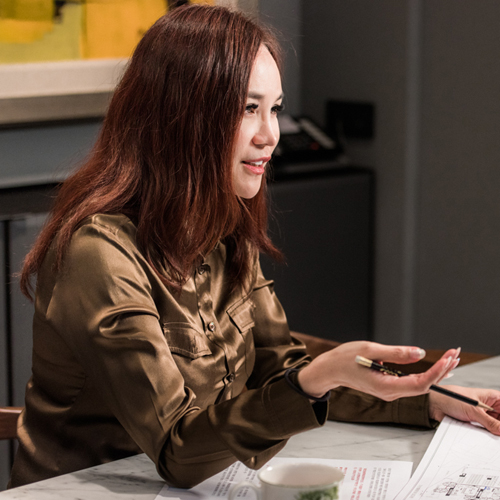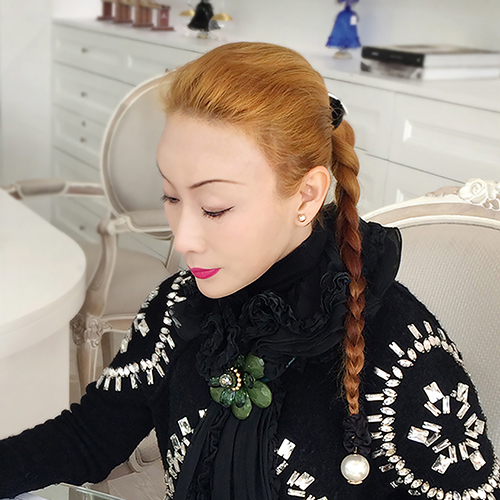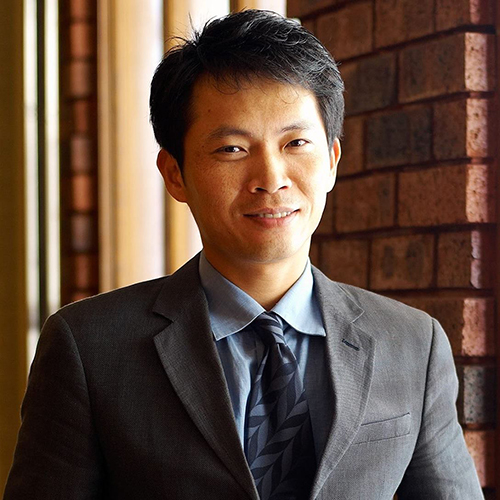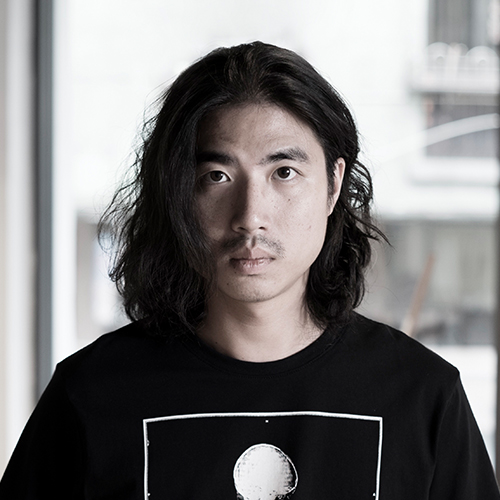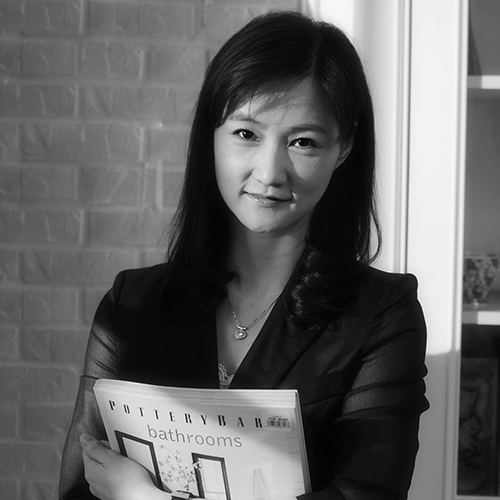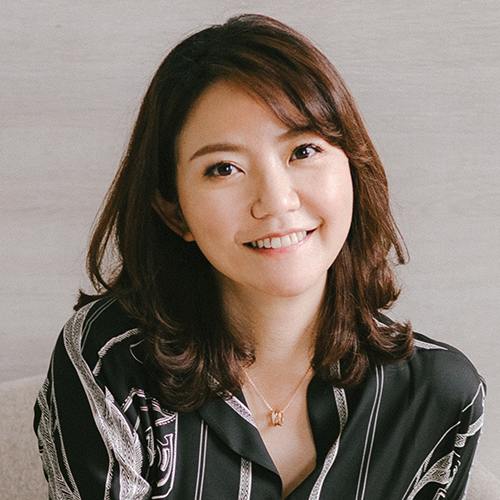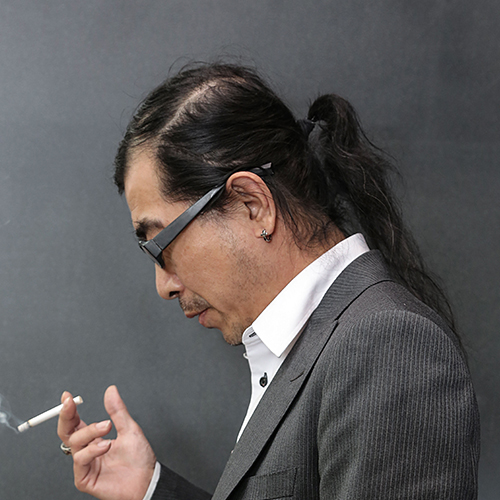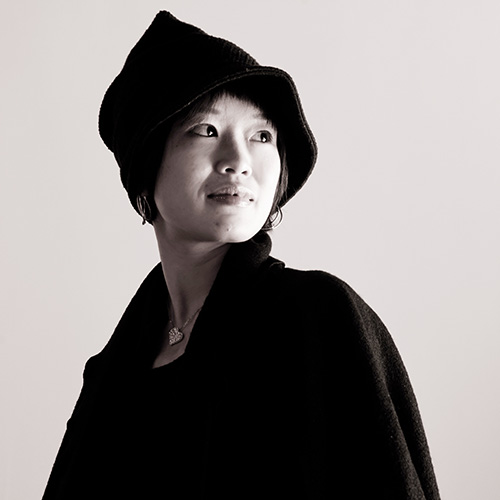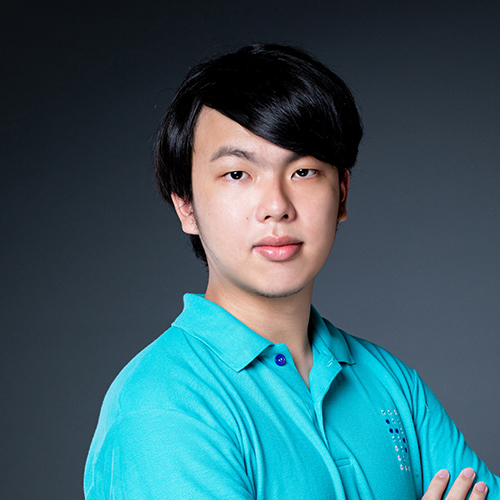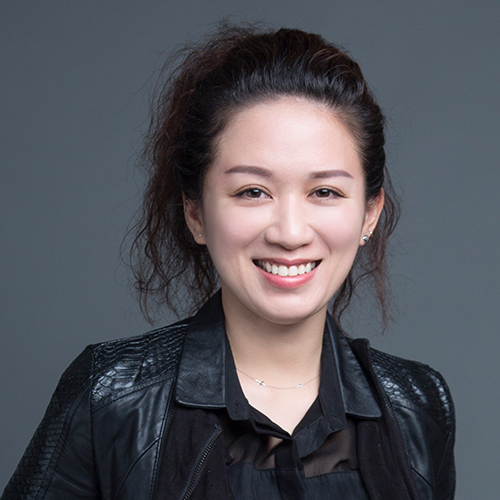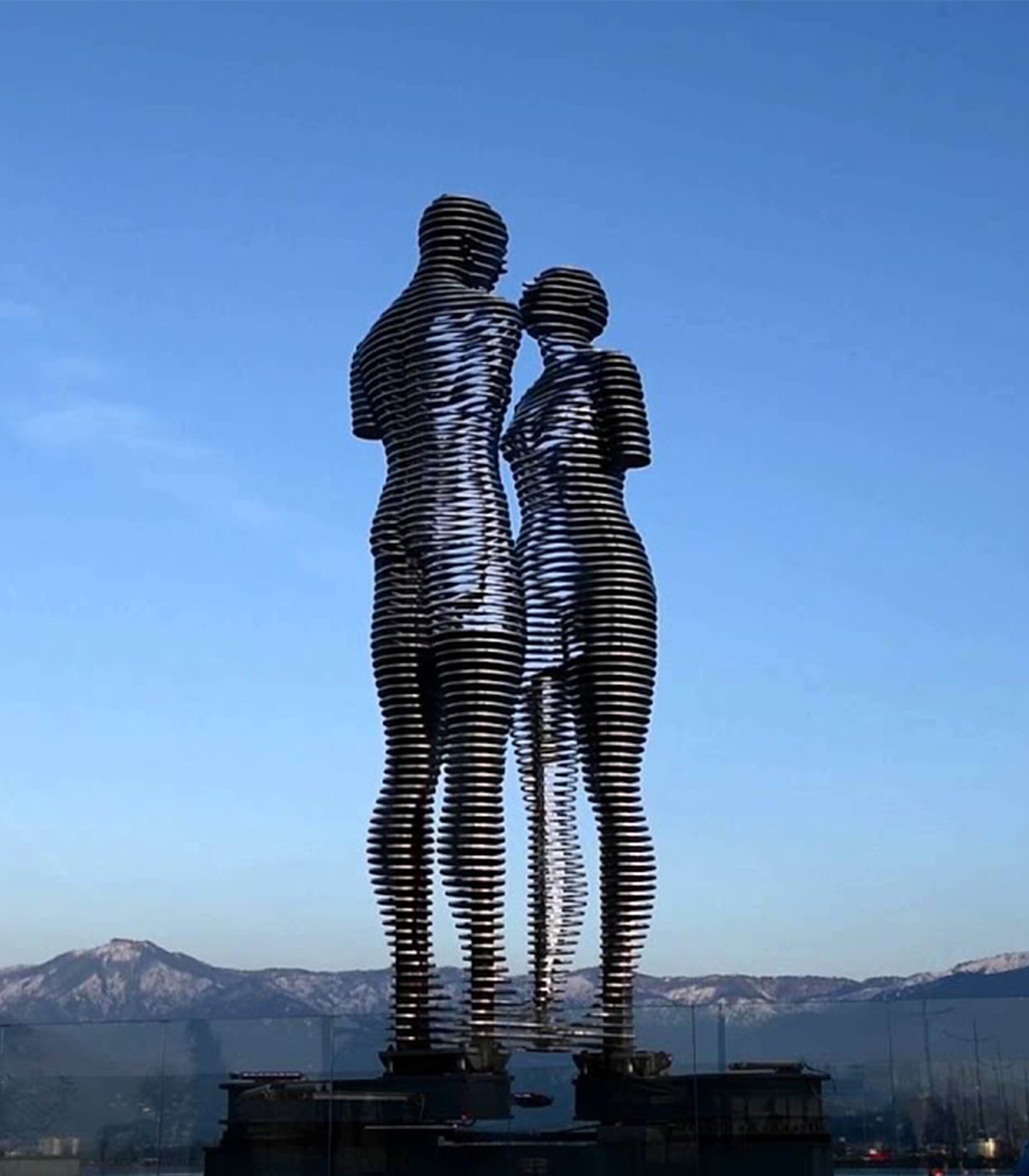
新興歐洲最動人的雕像:巴統的阿里和尼諾
多年後,它仍然被稱為《男人和女人》,十多年前它在威尼斯雙年展上首次亮相。對於喬治亞黑海沿岸的城市巴統(Batumi)的人民而言,自那以後便在這裡找到了永久居所,這就是《阿里和尼諾(Ali and Nino)》。對於每個造訪這座城市的人來說,這可能都是他們旅行的永恆記憶:一個(就各種意義上的)動人的雕像,將兩個戀人慢慢聚集在一起,短暫擁抱,只是他們貌似又會隨時分開。
Officially, it’s still known as Man and Woman, the name with which it made its debut at the Venice Biennale more than a decade ago. To the people of Batumi, the city on Georgia’s Black Sea coast where it has since found a permanent home, it’s Ali and Nino.To everybody who visits the city, it’s likely to be the abiding memory of their trip: a moving (in every sense of the word) statue which slowly brings two lovers together for a short embrace, only for them to part almost immediately.
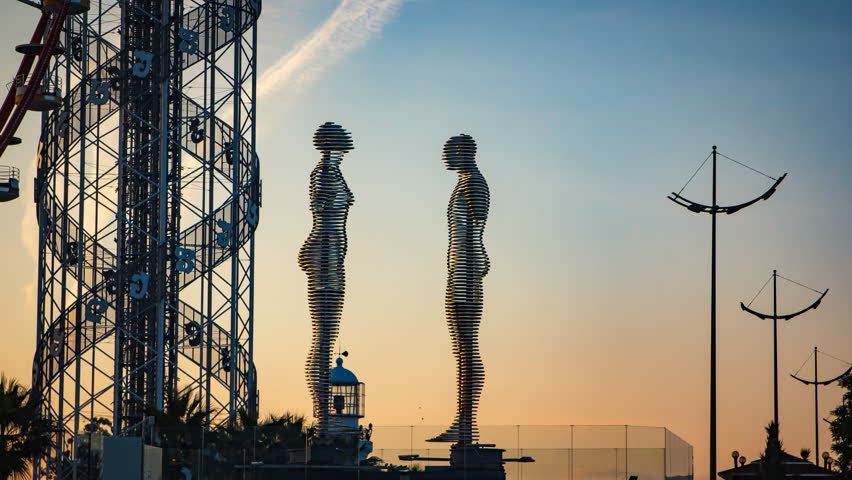
雕像暗示,沒有什麼是永恆的,享受這一刻。在其悲劇般的美麗之前,您不可能不被困惑,迷住了幾乎整整十分鐘的時間,以完成聚集和分離的整個週期。然後您將站在那兒再次觀看,一次又一次。這確實令人著迷。
《男人和女人》是一個令人驚嘆的例子,展現了概念、力學和設計的完美結合,它可能是喬治亞藝術家塔瑪拉・克維斯塔德澤(Tamara Kvesitadze)最著名的作品。
Nothing is permanent, the statue suggests, enjoy the moment. It’s impossible not to stand transfixed, bewitched almost, before its tragic beauty, for the full 10 minutes it takes to complete the full cycle of coming together and breaking apart. And then you’ll stand there and watch it again. And again. It’s truly mesmerising.
A stunning example of concept, mechanics and design, Man and Woman is probably the best-known work of the Georgian artist Tamara Kvesitadze.
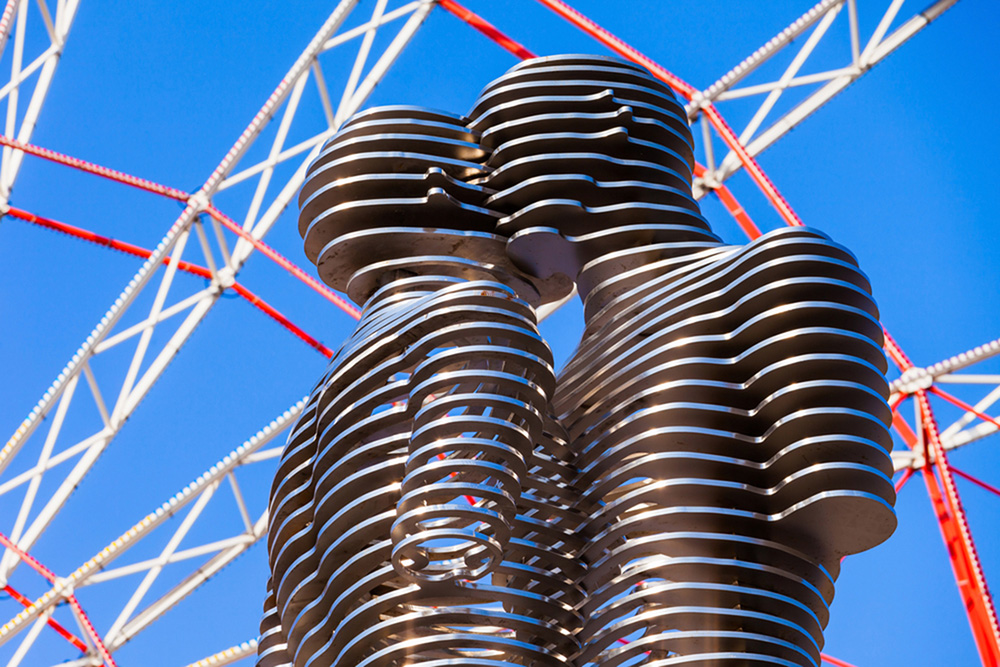
「人們大多將其與愛聯繫在一起,因此它在觀眾中激起了積極的情緒。任何人都可以按照自己的喜好解釋這座紀念碑,但是我的作品傳達的主要信息是,只有很少的時間可以在一起。對於某人來說,這段短暫的時間可能意味著整個世紀。」克維斯塔德澤說:「這是雕塑背後的簡單想法。」
但是「阿里和尼諾」又是誰呢?
“People mostly associate it with love, so it stirs positive emotions within viewers. Anyone can interpret this monument as he/she prefers, yet the main message that my work conveys is that being together is possible for only a little time. This short period for someone might mean a whole century. This is the simple idea behind the sculpture,” she says of the statue.
But what of Ali and Nino?
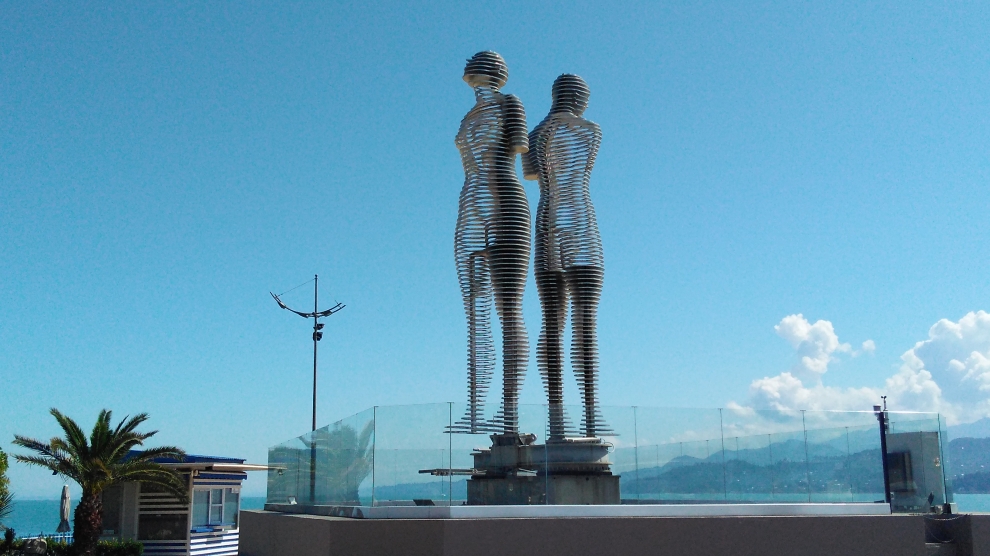
阿里和尼諾(Ali and Nino)主要描寫在亞塞拜然的首都巴庫,男孩阿里(Ali)和女孩尼諾(Nino)的故事:阿里是一個來自亞塞拜然貴族家庭的穆斯林小學生,他愛上了尼諾,一個來自歐洲的美麗基督教女孩。為了團結在一起,他們必須克服個人名譽、家族血仇、第一次世界大戰和俄國的布爾什維克革命。
最後,他們必須在忠於自己的文化信仰和傳承以及對彼此的熱忱之間做出選擇。他們最終選擇了彼此,然而阿里在前往巴庫時與布爾什維克黨戰鬥而死。
Set mainly in old Baku, Azerbaijan, Ali and Nino is a sweeping novel of romance and adventure which tells the tale of Ali, a Muslim schoolboy from an aristocratic Azeri family who falls in love with Nino, a beautiful Christian girl with distinct European sensibilities. In order to be together they must overcome personal scandal, family blood feuds, World War I and the Bolshevik revolution.
In the end, they must choose between loyalty to their cultural beliefs and heritage, and ardent devotion to each other. They choose each other, only for Ali to die fighting the Bolsheviks as they advance on Baku.
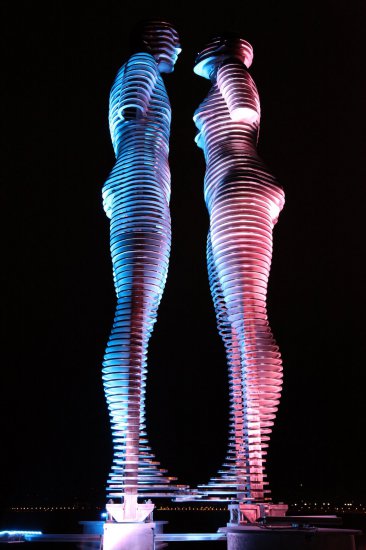
與《阿里和尼諾》的故事一樣令人著迷的是小說的作者庫爾班・賽義德(Kurban Said)的謎團。該書於1937年首次出版時,據認為是奧地利的愛倫菲斯(Elfriede Ehrenfels)男爵夫人撰寫的,因為她是出版合同的簽字人。然而,幾年後進行的研究表明,它實際上是由她的朋友之一的列夫・努西姆鮑姆(Lev Nussimbaum)用化名庫爾班・賽義德(Kurban Said)編寫的。
沒有人完全確定《阿里和尼諾》的故事是如何與克維斯塔德澤的雕像聯繫在一起,這位藝術家本人從未引用過這部小說(該小說由導演Asif Kapadia於2016年拍攝成電影)。但是,她似乎並不介意,並且承認人們有自己的解釋,她去年告訴英國廣播公司,「我會聽人們在說什麼,有時也會喜歡他們講出的故事。」但是,對她來說,這似乎是一件更個人、更私人的作品。
她說到,「我是在受傷的那一刻設計的,所以我想讓別人感受到跟一個人在一起的時間片刻,然後失去的心情寫照。」
Just as intriguing as the story of Ali and Nino is the mystery surrounding the novel’s supposed author, Kurban Said. When the book was first published in 1937, it was thought to have been written by the Austrian countess Baroness Elfriede Ehrenfels, as she was the signatory on the publishing contract.However, research carried out some years later revealed that it was actually written by her friend, one Lev Nussimbaum, under the pseudonym Kurban Said.
Nobody is entirely sure how the story of Ali and Nino became associated with Tamara Kvesitadze’s statue. The artist herself never referenced the novel (which was made into a film by director Asif Kapadia in 2016).However, she appears not to mind, and acknowledges that people have their own interpretations, which, she told the BBC last year, “I listen to and sometimes like.”For her, however, it appears to be a more personal work.
“I designed it at a moment when I was hurt, so I wanted to make what was my idea of being together for a moment, with someone, and then you lose it,” she says.

雕像活動影片:
Word: Craig Turp-Balazs
Source: Emerging Europe
Video: Youtube




